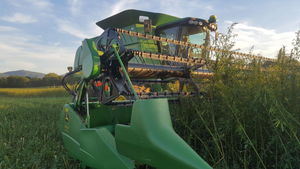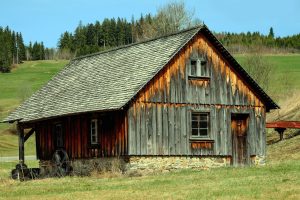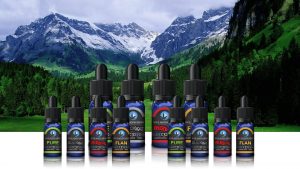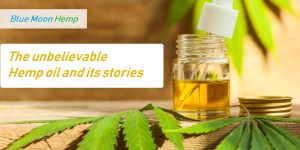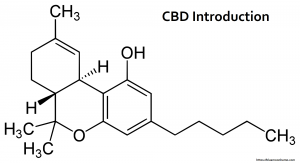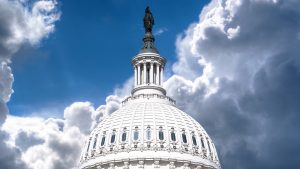Among the many crops grown on Glenn Rodes’ family farm in Rockingham County this summer was one that has not been cultivated in Virginia for decades but that may have a chance at a comeback now, thanks to a slow shift in attitudes and the law.
Hidden behind rows of corn in one field, Rodes grew a small plot of hemp — a hardy, fiber-rich plant that can grow 8 feet tall and which has been used for thousands of years to make textiles, rope, paper, animal feed and food products.
In September, Rodes’ farm was part of Virginia’s first hemp harvest in decades. Hemp was once a mainstay crop in Virginia, until it was banished as part of the long U.S. war on drugs starting in the 1930s.
Though it is grown in many other countries and used in numerous products — even some automobile parts contain hemp — the crop vanished through guilt by association. It is a variety of Cannabis sativa, the same species as the marijuana plant.
Hemp advocates say the plant does not deserve that opprobrium. Having been bred over many generations for its industrial uses, hemp has vastly lower concentrations of tetrahydrocannabinol, or THC, the psychoactive compound that makes marijuana a recreational drug.
“There is a 70-year stigma that has been attached to it, but (hemp) is not a drug,” said Rodes, who, along with several other family members, operates a diversified, 900-acre crop and livestock farm started by his father in 1949.
Rodes said he was especially interested in growing hemp because of its potential to make biofuels. The hemp grown on his farm was used to make biodiesel to run farm equipment.
The Rodes farm is among the early participants in a research program that could lead to a revival of the crop. A movement is underway to remove legal barriers to the cultivation of hemp, though it remains under tight regulation for now, and it is unclear to what extent full commercialization might happen.
In the 2014 farm bill, Congress allowed state departments of agriculture to license the growing of industrial hemp for research purposes.
With the change in federal law, 30 states, including Virginia, then passed legislation authorizing their own hemp research programs. Virginia passed its legislation in 2015.
“It’s funny that we had to pass legislation just to do research,” given hemp’s history in the state, said Del. Joseph R. Yost, R-Giles, who sponsored one of the bills in 2015.
Yost noted that during the Colonial era, Virginia farmers were required to grow hemp, partly to supply fiber for ropes to the British Royal Navy.
“People think it was tobacco that started this colony, but it was also hemp,” said Jason Amatucci, founder and executive director of the Virginia Industrial Hemp Coalition, a group that advocates the development of the Virginia hemp industry.
In 2016, the General Assembly passed another set of bills allowing for commercial production of hemp, but federal law would have to be relaxed further for that to happen.
Two bills are pending in Congress that would exclude industrial hemp from the definition of marijuana if it has a THC concentration of less than 0.3 percent — far less than the concentration in marijuana, which can be from 5 to 20 percent.
One bill, sponsored by Rep. Thomas Massie, R-Ky., has 74 co-sponsors from both parties. The Senate bill is sponsored by Sen. Ron Wyden, D-Ore., with 16 co-sponsors.
***
In Virginia, research programs are underway at Virginia Tech, Virginia State University and James Madison University.
The Virginia Department of Agriculture and Consumer Services imported 16 varieties of hemp seed and issued licenses to 29 people to grow hemp this year as part of the research programs. A total of 37 acres were planted this year on plots in six counties.
“At least for now, we are just trying to understand how this plant grows and how it performs in different environments in the state,” said John Fike, a professor of crop and soil environmental science at Virginia Tech who oversees that school’s hemp research.
“We typically look at hemp as a plant that can produce very durable and very strong fiber for its weight,” Fike said. “It is not as strong as fibers made from some sort of man-made chemicals but, when you look at it on a weight basis, it actually stands up fairly well. There is also a lot of interest in it as a source of oil and feeds.”
Rodes grew a 10-acre plot for researchers at JMU. This year’s test partly was to determine whether conventional farm equipment could be used to plant and harvest hemp.
Another plot was grown in Albemarle County to test the plant’s reaction to different soil types.
Preliminary results of the research are promising, said Michael Renfroe, a biology professor at JMU who oversaw the research program there.
“I think this is a crop that has a high potential for growth in Virginia,” he said. “I think we will be able to find some very useful cultivar for both fiber and oil production. It could be a good crop for small-acreage farmers.”
For now, large-scale commercial production remains prohibited. That is why the plot on Rodes’ farm had to be grown in the middle of a cornfield, so it could not be seen.
Everyone who worked with the plants had to pass a criminal background check, including the JMU undergraduate students who worked on the project.
***
If commercial production is allowed, it also is uncertain just how large the market could be for Virginia-grown hemp or how much income it might generate for farmers.
Advocates say the market could be sizable, given hemp’s usefulness in many products.
The Hemp Industries Association, a national advocacy group for hemp production, estimated the value of hemp products sold at retail in the U.S. at $573 million in 2015. That includes $90 million worth of food products containing hemp, $147 million worth of personal care products, $95 million worth of textiles, and $116 million worth of industrial applications such as car parts.
“We literally have millions of cars on the road that have hemp parts in them,” said Eric Steenstra, executive director of the association. “You don’t even know it’s there, because it’s underneath the leather and the trim on the car.
“A lot of those parts are made by American companies, but they are made with imported (hemp) fiber. Our farmers are left out of that market.”
Yost admitted he was skeptical when he first was approached about carrying legislation to allow for hemp research in Virginia.
“It seemed far-fetched to me,” he said. “But the more research and study you do about it, the more you see the possibilities.”
Yost said he now sees hemp as a potential job-creation catalyst in regions of the state hurt by the loss of tobacco and manufacturing jobs.
For advocates such as Amatucci of the Virginia Industrial Hemp Coalition, the research that is happening now is good, but the move toward eventual commercialization is not happening quickly enough. Amatucci argues that Virginia is falling behind other states such as Kentucky, which has a larger hemp research program.
The amount of hemp cultivated in 2016 in the various research programs across the U.S. was close to 10,000 acres, or double the amount grown in 2015.
Amatucci thinks Virginia lawmakers should devote more resources to developing the crop in the state.
“I don’t know why we are so slow on this,” he said. “It is either a stigma, or possibly concerns about it competing with other industries.”
“If we are going to have an industry, our farmers need to have experience, and that takes time,” he said. “We are in one of the three hot zones in the world that grows hemp best.”
Rodes, the Rockingham farmer, said he sees hemp as a potentially lucrative cash crop.
“Initially, I believe food products will be the value of the crop until a fiber infrastructure is set up in our country,” he said. “But that is not going to happen until the federal law changes to allow industrial hemp production.
“My hope for the future is that it will be a crop that farmers can put in their normal rotation.”




